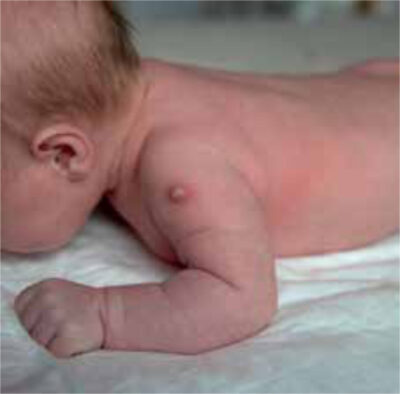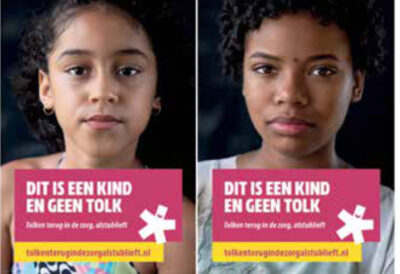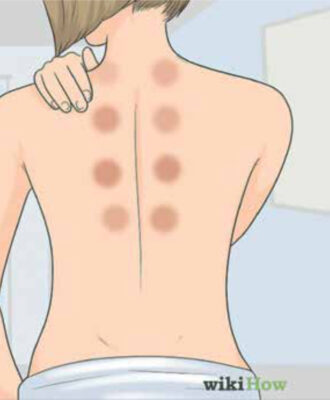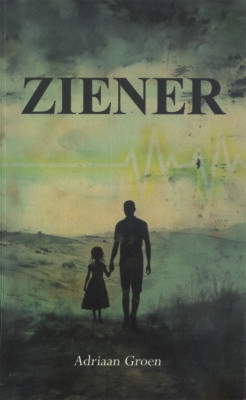Main content
The immigrant population of the Netherlands has become significantly more diverse in the last 40 years. Currently one in five Dutch people has at least one parent who was born abroad. In 1972, 9.2% of the population had at least one foreign-born parent.[1]
It has become apparent that the health-care system is well designed to care for the dominant cultural groups, but there are sometimes large health outcome disparities for those on the margins. The intercultural approach in paediatrics requires health workers to consider care as a specific approach which includes the diversity of cultures, pathologies or disorders, family environments, education, and other social determinants of health.
In this article, we consider eight examples of a global health perspective in the Dutch consultation room which can be helpful to provide equitable health care for all.
Examples from a dutch paediatric clinic
1. Teenager 14 years old from Yemen with abdominal pain.
Alternating complaints of diarrhoea or constipation. Diagnostics did not show abnormalities. He is living in an asylum seeker centre and depends on the food that is provided, which includes milk products. One of the registrars is discussing the patient with the paediatrician who is using her global health glasses.
Did you know that the majority of sub-Saharan Africa has Lactose intolerance.[2] This can give such kinds of abdominal complaints? What do you know about lactose intolerance?
Check the world map for lactose intolerance.[3] You will find that Yemen has 100% lactose intolerance.
| Intermezzo – food It is always good to realise that moving to another country often means a changing diet and exposure to new food products. This can cause health problems, as in the example above. Another example is children with G6PD deficiency (a genetic disorder that affects red blood cells) who arrive in the Netherlands and are offered fava beans in their meals, which can cause haemolysis.[4] |
There is also another factor which is important to take into consideration. Migration to high-income countries is linked to an increased risk of non-communicable diseases. Immigrants from low- and middle-income countries moving to high-income countries experience an abrupt change from a more traditional food environment to a modern, industrialized one. Over time they suffer from higher rates of many negative health outcomes, including obesity, type 2 diabetes, and other diet- and metabolism-related chronic diseases, often at a younger age.[5]
2. Girl Yasmina is 10 years old, referred to you, paediatrician, by the surgeon.
The girl has been seen three times at the emergency department over the last half year. Every time, the surgeon saw the patient because of suspected appendicitis. There were symptoms of fever and some elevated infection markers (CRP and Leucocyte) but ultrasound showed a normal appendix. What do you think? What question will you ask the patient to get more information?
An illustrative article from the NTVG [6] describes that, in the Netherlands, Familiaire Meditareane Fever (FMF) in children is often diagnosed with a delay. The case of Yasmina could indicate she has FMF. It’s important to have a good family history, and as diagnostics serum Amyloid A [7] can be used, which is a sensitive but not specific marker; the other inflammatory markers are not specific markers. Nowadays, DNA analysis is more often used in diagnosing FMF. Genetic testing may determine if your MEFV gene contains a gene change that is associated with FMF. And consider starting treatment with Colchine.
| Intermezzo – information on website family-doctor and migrant The beautiful (Dutch) website Huisarts-Migrant is an illustrative website with a lot of practical information about different diseases and disorders in migrants. Beside information for physicians, there is also practical patient information in different languages. I would advise all paediatricians working with immigrants to check out this website.[8] |
3. An infant of three months old is brought to your out-patient clinic with problems of constipation.
During examination of this child a pustule on the left upper arm has been noticed. What do you think?

Did you know that all children born in the Netherlands, with one parent who was born in a TB-endemic country receive an invitation for BCG vaccine (for the children) from the GGD (municipal health service)tuberculosis service.
| Intermezzo – infectious diseases You cannot exclude a diagnosis that you did not consider. There is a great overview article in the Dutch Magazine Praktische Pediatrie ‘Fever in a child who is coming from the tropics’.[9]So a travel history is always useful. Sometimes you will diagnose, for example, malaria in a child without a travel history but with family members who have been traveling or who live close by an airport. This is called suitcase or airport malaria. It’s also interesting to know that the number of cases of airport malaria in Europe from 2010 to 2020 was 7.4 times higher than that recorded during the 2000–2009 decade.[10] |
4. A boy of eight years is visiting your out-patient clinic with complaints of bed wetting.
In the last three years, the boy was dry during the night. The family has been living in the Netherlands for the past five years; the boy speaks fluent Dutch, but an interpreter (by phone) was used because the mother only speaks a few words of Dutch. At the end of the consultation, the paediatrician asked if the boy was afraid of something. When the paediatrician asked again, the boy explained with a soft voice that he was afraid because his mother is almost dying. The mother looked surprised and didn’t understand what the boy was talking about. With the help of the interpreter, it became clear that the boy had been his mother’s translator when she visited the gynaecologist for myoma. The boy did not fully understand the explanation of the gynaecologist and thought that his mother had a tumour in her belly and that she would die.
| Intermezzo – language barrier What would you do? Would you engage a family member as an interpreter? In the Netherlands, a campaign was started to explain that a child is not an interpreter. Check for more information their website (in Dutch) ‘Dit is een kind en geen tolk?’ (This is a child and not an interpreter) [11] |

5. A six-week old infant comes to the Emergency Department with dyspnoea and low saturation.
The parents are from Zimbabwe, and the father is working for an international company. The child is admitted in the hospital and needs oxygen (high flow) for two weeks. The temperature of the child was always stable, there are no symptoms of bronchiolitis, the inflammation markers are low, cultures are all negative, and gastric washing is negative for tuberculosis. The chest x-ray shows persistent diffuse alveolar infiltrates. What do you think? And what do you do?
Do you ask the parents if they use other types of medication like herbs or oil?
| Intermezzo – complementary or traditional medication Global health physicians will probably all have cases in mind that show the different ways of diagnosing and treating sick children worldwide, depending on the context, culture or beliefs. |
Exogenous lipoid pneumonia (ELP) is described in the literature as a disorder caused by inhalation or aspiration of mineral, plant-based or animal-based oils; it is generally uncommon. ELP in children has been reported in the literature in several parts of the world.
In small children, the oil is sometimes given in case of abdominal cramps. It can be given orally or nasally, but instead of going to the stomach it sometimes ends up in the lungs.[12]
A second example in this category is the following photo – what do you think has caused the pattern of marks?
This is an example of marks after cupping (ancient form of alternative medicine by placing special cups on the skin). This picture shows a clear pattern, but sometimes that pattern is less clear and can make you worry.[13]
Our advice is to be alert and always ask caregivers if they use complementary medication / traditions.

6. Parents come in the middle of the night with their three-year old boy to the emergency room (without referral) because the boy is crying and complaining about anal pruritis.
When the father changed the diaper of the boy he saw worms. He decided not to wait and came immediately to the emergency room. There is a language barrier, but a family member is helping on the phone. What would you think if you saw this child at the Emergency Department?
| Intermezzo – health literacy The example above (or Example 6) illustrates different aspects of health literacy including: how to use the health care system in the Dutch way, gaining access to the family doctor in the evening, using internet to find a first solution and basic health knowledge, and understanding of self-help medication that you can buy at a chemist. |
Health literacy broadly refers to the ability of individuals to “gain access to, understand and use information in ways which promote and maintain good health”[14] for themselves, their families, and their communities.[15] One in four Dutch citizens has a decreased health literacy. Pharos (a Dutch Expertise centre about health inequalities in the Netherlands) provides useful advice about this subject for you as a healthcare worker or for your organization.[16] In your interaction with persons with decreased health literacy, please use simple educational material during your consultation (see medifoor [17] of praat en gesprekskaart van Pharos [18]) and always ask the patient to summarize your information back to you.
7. A 10-year-old girl has been seen at the in-patient ward with severe (chronic) pain.
Thorough examinations have been done, and no abnormalities were found. Explanation has been given about complex regional pain syndrome and the standard care was started. This includes; multidisciplinary approach with the implementation of intensive physical therapy in conjunction with psychological counselling and pharmacological pain treatment in combination with non-pharmacological pain treatment. For this, medical hypnotherapy was suggested. The family has a religious background, and one of the family members mentioned that they think that it is not allowed. What do you think and what do you do?
| Intermezzo – intercultural approach Unconsciously, every health worker brings his/her own cultural frame of interpretation to a consultation room. Developing cultural competence helps to understand, communicate with, and effectively interact with people across cultures. Deardorff defines competence as “the ability to communicate effectively and appropriately in intercultural situations based on one’s intercultural knowledge, skills, and attitudes”. [19] A helpful book you can use is Intercultural communication in healthcare (in Dutch) or you can join one of the intercultural communication workshops by Dorian Maarsen and Charlie Obihare (Paediatrician).[20] |
A few tips you can already use (adopted from deardoff):
Practice openness by demonstrating acceptance of differences. Demonstrate humility through suspension of judgment and the ability to learn. Be sensitive to others by appreciating cultural differences. Show a spirit of adventure by showing curiosity and seeing opportunities in different situations. Use a sense of humour through the ability to laugh at ourselves. Practice positive change or action by demonstrating a successful interaction with the identified culture.[19]
8. A 12-year-old girl has been seen at the OPD for being overweight.
Combined lifestyle interventions have been started in the previous consultations but without the desired effect. At one point, the paediatrician asks about the girl’s progress with the physiotherapy / sport coaching. The parents (coming from a North African country) explain that they never went to the physiotherapy because their daughter is not disabled and that in their country you only go to a physiotherapist when you are disabled.
| Intermezzo – obesities in migrants Pharos has another useful document about overweight / obesity in vulnerable groups. Literature shows that combined lifestyle interventions are less successful among migrants. An integral approach is needed with an eye for all the different social determinants of health.[21,22] There has been a growing awareness that providing culturally sensitive paediatric care, especially during child visits, is a potential way to address health care disparities and promote health equity.[23] |
Websites to be checked
- www.huisarts-migrant.nl
- The UK Migrant Health Guide
- www.pharos.nl
- www.medifoor.nl
References
- Bevolking steeds verscheidener naar herkomst. Wetenschappelijk raad voor regeringsbeleid. Nieuwsbericht 29-05-2018. [Internet] [citated 1 May 2023]
- Augusto Anguita-Ruiz Concepción M. Aguilera and Ángel Gil. Genetics of Lactose Intolerance: An Updated Review and Online Interactive World Maps of Phenotype and Genotype Frequencies. Nutrients. 2020 Sep; 12(9): 2689. Published online 2020 Sep 3. doi: 10.3390/nu12092689
- Lactose intolerance by country. 2023. [internet] [citated 10 April 2023] https://worldpopulationreview.com/country-rankings/lactose-intolerance-by-country
- Glucose 6 Phosphaat Dehydrogenase deficiëntie = Favisme. Website huisarts-migrant. [citated 10 April 2023] https://www.huisarts-migrant.nl/glucose-6-phosphaat-dehydrogenase-deficiantie-favisme/#
- Aravinda Berggreen-Clausen, Sai Hseing Pha,Helle Mölsted Alvesson et al. Food environment interactions after migration: a scoping review on low- and middle-income country immigrants in high-income countries. Public Health Nutr. 2022 Jan; 25(1): 136–158. Published online 2021 Sep 13. doi: 10.1017/S1368980021003943
- Joost Frenkel, Frederike J Bemelman, Bert-Jan Potter van Loon et al. Middelandse koorts mis het niet. Mei 2013. Ned Tijdschr Geneeskd. 2013;157:A5784
- Mustafa Cakan, Nuray Aktay Ayaz, Gonca Keskindemirci et al. Serum Amyloid A as a biomarker in differentiating attacks of familial mediterreanean fever from acute febrile infections. Clinical Rheutamology 2020 jan; 39(1):249-253. doi: 10.1007/s10067-019-04765-1. Epub 2019 Sep 4.
- Huisarts en migrant. [citated 8 April 2023] https://www.huisarts-migrant.nl/
- K. Koop. Koorts bij een kind dat uit de tropen terugkeert. 2015. Praktische pediatrie. Jaargang 9, editie 4, nummer 4.
- Leo Dilane Alenou. Josiane Etang. Airport malaria in non-endemic Areas; new insights into Mosquito Vectors, Case Management and Major Challenges. Microorganisms. 2021 Oct; 9(10): 2160. Published online 2021 Oct 16. doi: 10.3390/microorganisms9102160
- Campaign een kind is geen tolk. 2022. https://kindenzorg.nl/nieuws_achtergrond/dit-is-een-kind-en-geen-tolk. [citated 1 April 2023]
- Diana Marangu, Diane Gray, Aneesa Vanker et al. Exogenous Lipoid pneumonia in children; A systematic review. Paediatri Respir Rev. 2022 Feb; 33: 45-51. Published online 2019 Jan 20. doi: 10.1016/j.prrv.2019.01.001
- Francesco Lupariello, Elena Coppo, Illaria Cavecchia. Differential diagnosis between physical maltreatment and cupping practices in a suspected child abuse case. Forensic Sci Med Pathol. 2020 Mar: 16 (1): 188-190. doi: 10.1007/s12024-019-00155-w. Epub 2019 Aug 30.
- Wolrd Health Organization. Internet [citated 14 April 2023] https://www.who.int/teams/health-promotion/enhanced-well-being/ninth-global-conference/health-literacy
- World Health Organization. Common health needs of migrants and refugees. A literature review. 2021
- Pharos. Laaggeletterheid en beperkte gezondheidsvaardigheden. https://www.pharos.nl/thema/laaggeletterdheid-gezondheidsvaardigheden/
- Medifoor van begrip naar gezondheid.– visuele medische metaforen in de spreekkamer. www.medifoor.nl [internet] [citated 17 April 2023]
- Pharos. Praatkaarten. https://www.pharos.nl/thema/begrijpelijke-voorlichtingsmaterialen-en-beeldverhalen/
- Darla Deardoff. Chapter; how to assess Intercultural competence. In Book: Research methods in intercultural communication; A Pratical guide. December 2015. (pp. 120-132) DOI:10.1002/9781119166283.ch8
- Raya Nunez Mahdi, Charlie Obihara, Dorian Maarse, Carlos Nunez, Edwin Hagenbeek. Interculturele communicatie in de zorg. Kennis, vaardigheden en houding voor zorgprofessionals. Boek. 2019. Uitgeverij Koninglijk van Gorcum.
- Pharos. Overgewicht en obesitats bij kwetsbare groepen. Infosheet. https://www.pharos.nl/infosheets/overgewicht-en-obesitas-bij-kwetsbare-groepen/
- Maha Alsubhi, Joanna Goldthorpe, Tracy Epton et al. What factors are associated with obesity-related health behaviours among child refugees following resettlement in developed countries? A systematic review and synthesis of qualitative and quantitative evidence. Pediatric Obesity/behaviours. 30 June 2020. https://doi.org/10.1111/obr.13058
- William Okoniewski, Mangai Sundaram, Diego Chaves-Gnecco. Culturally sensitive interventions in pediatric primary care settings; a systematic review. Pediatrics. 2022 Feb 1;149(2):e2021052162. doi: 10.1542/peds.2021-052162.



















































